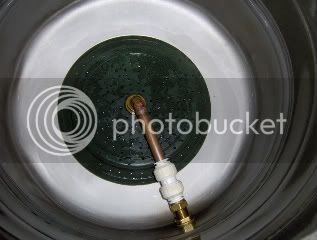Right, I joined this forum about 2 weeks ago, and have been brewing (2 kits) for the same length of time. I keep reading that homebrewing is very addictive, but I must admit that I find this forum just as adictive - as I find myself at my PC every half hour or so (when I can) checking latest posts etc. On reading these (particularly the keg conversion thread) I find myself more and more drawn to the thought of an AG setup in my new house (when I move to Newark in June).
I reckon I can get my hands on (so to speak) quite a few 80 (or so) pint kegs for nothing, or next to nothing legitimately. I even think I can get someone to do any work to them that is required eg drill holes and cut tops off etc. I'm still not sure though exactly what equipment I need for a setup. I gather I need a HLT (what does that stand for and what does it do?), a mash tun (again, what does it do?), a boiler/kettle? (what for?), and then an FV, and then a cornie keg or bottles?
I would really appreciate it if someone could 'lead me by the hand' and let me know, step by step (in layman/stupid terms) what I need and why? If this has already been explained somewhereelse, then I apologise.
Thanks for your input gents. :
I reckon I can get my hands on (so to speak) quite a few 80 (or so) pint kegs for nothing, or next to nothing legitimately. I even think I can get someone to do any work to them that is required eg drill holes and cut tops off etc. I'm still not sure though exactly what equipment I need for a setup. I gather I need a HLT (what does that stand for and what does it do?), a mash tun (again, what does it do?), a boiler/kettle? (what for?), and then an FV, and then a cornie keg or bottles?
I would really appreciate it if someone could 'lead me by the hand' and let me know, step by step (in layman/stupid terms) what I need and why? If this has already been explained somewhereelse, then I apologise.
Thanks for your input gents. :





